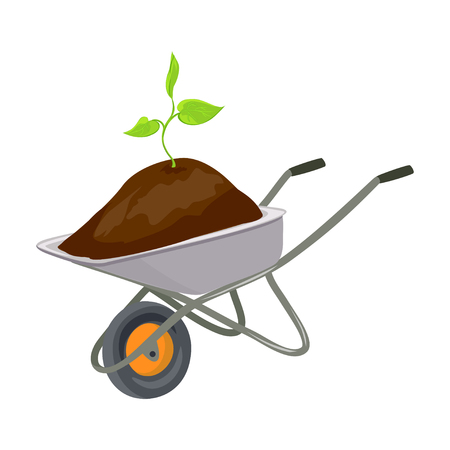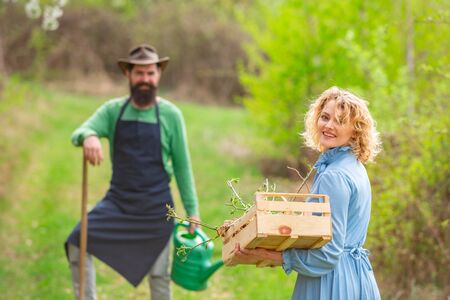1. Getting Started with Allotment Composting
There’s a certain pride that comes from tending an allotment, especially when you make the most of every scrap by composting. Before you dive in, it’s important to gather the right tools and understand the groundwork required for successful composting on your plot. First, arm yourself with sturdy gloves, a garden fork, a shovel, and a compost bin or heap—many British allotment holders opt for wooden bins or recycled plastic units, which are both practical and in keeping with local guidelines. Make sure your bin is positioned on bare soil to encourage healthy drainage and access for worms, nature’s own little helpers.
As for materials, collect a mix of ‘greens’ (kitchen peelings, grass clippings, tea bags) and ‘browns’ (cardboard, shredded newspaper, autumn leaves). Remember not to include cooked food or meat, as these attract unwelcome pests and contravene most council regulations. It’s always wise to check with your local allotment committee about what can go into the communal or personal compost heaps; following community etiquette ensures harmony among neighbours.
Finally, take a moment to introduce yourself to fellow allotmenteers if you’re new—there’s a wealth of knowledge among seasoned plot holders who’ll gladly share tips. Starting off on the right foot with good manners and awareness of shared space goes a long way on British allotments. With these essentials in hand and respect for community rules, you’re well on your way to transforming waste into gardening gold.
2. Choosing the Right Compost Bin
When it comes to composting on your allotment, picking the right compost bin is as important as what you put inside it. In the UK, allotmenteers often debate which style works best for our famously unpredictable weather and limited plot space. Let’s take a closer look at the most popular options you’ll spot across British allotments, and weigh up their pros and cons so you can make an informed choice that suits your needs and habits.
Traditional Wooden Bins
Wooden compost bins are a classic sight in community gardens and on allotments up and down the country. They’re often made from slatted timber, sometimes with removable front panels for easy turning. You can buy them pre-made or build your own using recycled pallets—a thrifty tip passed down from many a seasoned plot-holder.
| Pros | Cons |
|---|---|
| – Excellent airflow aids decomposition – Can be expanded or adjusted to fit your space – More sustainable if made from reclaimed wood |
– Wood will eventually rot and need replacing – Might attract rodents if not well maintained – Assembly can be time-consuming |
Plastic Dalek Bins
Named after their resemblance to the famous Doctor Who villains, these upright plastic bins are a common sight on UK plots. Councils sometimes offer them at subsidised prices, making them an accessible entry point for beginners.
| Pros | Cons |
|---|---|
| – Compact and tidy—ideal for smaller plots – Retains heat well, speeding up composting – Easy to set up and relocate if needed |
– Limited capacity for larger gardens – Can become too wet without careful layering – Harder to turn or aerate contents thoroughly |
Open Compost Piles
The simplest approach is an open heap at the back of your plot. While this method is as old as gardening itself, it’s worth considering whether it fits with your site rules and local wildlife.
| Pros | Cons |
|---|---|
| – No cost or construction required – Easy access for adding material or turning – Flexible size—expand as much as you like |
– Can look untidy and may upset neighbours – Attracts vermin if not managed carefully – Slower decomposition due to lack of insulation |
Which Bin Is Best for You?
If you value tradition, sustainability, and don’t mind a bit of DIY, wooden bins are hard to beat. For those short on space or seeking fuss-free composting, plastic daleks are a practical option. And if budget is tight or you prefer a low-tech approach, an open pile might just do the job—as long as you keep on top of turning it! Remember: whatever style you choose, regular maintenance is key to making rich, crumbly compost that your plants will love.

3. What to Compost: Greens, Browns, and No-Gos
If you’re new to composting on your allotment, knowing what to add—and what to avoid—can make all the difference. In the UK, we have a wealth of local organic materials perfect for building rich compost. Let’s break it down into ‘greens’, ‘browns’, and those all-important ‘no-gos’.
Greens: Nitrogen-Rich Materials
‘Greens’ are moist, soft materials that add nitrogen to your heap. On British allotments, common greens include:
- Vegetable peelings from your kitchen (think carrot tops, potato skins, and onion ends)
- Grass clippings – a staple after mowing the lawn
- Coffee grounds and used tea leaves (just remember to remove any tea bags containing plastic)
- Annual weeds (before they set seed)
- Spent plants and trimmings from your allotment beds
These items help keep the compost heap active and lively. Just be sure not to add too much at once, as this can lead to a soggy, smelly pile.
Browns: Carbon-Rich Materials
Browns provide carbon and help balance out the moisture from greens. Locally available options include:
- Fallen leaves – autumn is prime time for gathering these
- Cardboard (tear up egg boxes or toilet roll tubes)
- Shredded newspaper (avoid glossy magazines)
- Straw and hay (if you have chickens or rabbits on site)
- Twigs and small prunings
A good rule of thumb is to aim for a 50/50 mix of greens and browns. Layer them as you go to promote airflow and healthy decomposition.
No-Gos: What Not To Compost
The list of things you shouldn’t put in your allotment compost bin is just as important as what you should add. According to UK guidelines, avoid:
- Dairy products and cooked food – these attract rats and other pests
- Meat, fish, or bones
- Perennial weeds like bindweed or couch grass (they can regrow from root fragments)
- Sick or diseased plant material (to prevent spreading pathogens across your plot)
- Pet waste from carnivores (e.g., dog or cat faeces) due to health risks
Local Tips
If your site has communal compost heaps, check with your allotment association about specific rules—they may have restrictions on citrus peels or onion skins. Remember, a well-balanced heap makes for crumbly, sweet-smelling compost ready for your next growing season.
4. Maintaining Your Compost Heap
Once you have your compost heap established on your allotment, regular maintenance is key to producing rich, crumbly compost that will nourish your soil. The unpredictable British weather and local wildlife can pose challenges, but with a few tried-and-tested techniques, you’ll keep things ticking along nicely.
Turning and Aerating: Keeping the Heap Healthy
Compost needs air to break down efficiently. Aim to turn your heap every couple of weeks with a garden fork. This simple task aerates the pile, helping beneficial microbes thrive and speeding up decomposition. If you’re short on time or energy, at least give it a good mix once a month—especially after adding large amounts of new material.
Monitoring Moisture Levels
Your compost should be as damp as a wrung-out sponge—not too dry, not too soggy. British weather can be notoriously fickle, so check moisture levels regularly, particularly after heavy rain or during dry spells. Here’s how to manage common scenarios:
| Situation | What To Do |
|---|---|
| Heap too wet (after rain) | Add dry materials like shredded cardboard or straw; cover with a tarp if persistent rain is forecast. |
| Heap too dry (in summer) | Add water with a watering can; incorporate fresh grass clippings or vegetable peelings for extra moisture. |
Tackling Pests and Wildlife
Rats, foxes, and other curious visitors may see your heap as an open buffet. Avoid adding cooked food, meat, dairy, or oily scraps—stick to raw veg trimmings, tea bags (plastic-free), and garden waste. If pests persist, line your bin with fine chicken wire and always keep the lid closed.
Adapting to Seasonal Changes
Autumn brings heaps of fallen leaves—layer these into your compost with green material for balance. In winter, decomposition slows; insulate the heap with old carpet offcuts or bubble wrap to retain warmth. Come spring and summer, ramp up turning and monitor moisture more closely as temperatures rise and rainfall varies.
A well-maintained compost heap is a living thing—it rewards regular attention with nutrient-rich results that make all the difference on your plot. With a little patience and these practical tips rooted in British experience, you’ll master the art of composting whatever the weather throws at you.
5. Troubleshooting Common Allotment Composting Problems
Even the most seasoned allotment holders encounter hiccups with their compost heaps from time to time. If you find yourself nose-wrinkling at unpleasant odours, frustrated by slow decomposition, or battling unwanted visitors like rats, don’t worry—these issues are all part and parcel of the composting journey here in the UK. Below, I’ll share practical solutions gleaned from generations of British gardeners who have kept thriving allotments through rain, shine, and the odd surprise.
Banishing Bad Odours
A well-managed compost heap should smell earthy—not foul. Offensive odours usually indicate too many ‘greens’ (nitrogen-rich materials like kitchen scraps) or excess moisture. The old timers on our allotment recommend adding more ‘browns’ such as shredded cardboard, dry leaves, or straw to rebalance the mix. Turn your pile regularly with a garden fork to aerate it; this encourages aerobic bacteria and keeps smells at bay. Covering your heap with a tarp or old carpet helps regulate moisture—just be sure not to smother it completely.
Speeding Up Slow Decomposition
If your compost seems to be idling rather than breaking down, check your material balance and heap size first. British weather can also play a part—a cold, wet spell will slow things considerably. Make sure you’re chopping larger items into smaller pieces; seasoned plot holders swear by running woody stems over with a mower before adding them to the heap. Layering greens and browns, keeping the pile moist (but not soggy), and turning it every fortnight can all help speed up the process. Some folk add a shovelful of mature compost or garden soil to introduce helpful microbes.
Deterring Rodents
Rats and mice are drawn to easy food sources, particularly cooked food, meat, dairy, or bread—never add these to your allotment compost bin. Stick to uncooked fruit and veg peelings, coffee grounds, and eggshells (well crushed). Investing in a rodent-proof bin with a secure lid goes a long way; some allotmenteers even line their bins with wire mesh underneath as an extra deterrent. Regularly turning the heap makes it less inviting for nesting rodents too.
A Little Allotment Wisdom
The best advice I ever received was to treat your compost like a living thing—it thrives on balance and attention. Don’t be discouraged by setbacks; every plot holder has faced them. With a bit of patience and these tried-and-true techniques passed down the rows of British allotments, you’ll soon have rich, crumbly compost ready for your next growing season.
6. Harvesting and Using Your Compost
Knowing When Your Compost is Ready
Patience is key when it comes to composting on your allotment. You’ll know your compost is ready when it takes on a rich, dark brown colour, has an earthy aroma, and you can’t distinguish the original materials any more. It should be crumbly to the touch and free from large, recognisable bits of waste. Generally, with regular turning and balanced ingredients, well-maintained heaps mature in 6 to 12 months—though some seasoned gardeners swear by the ‘two-year’ method for extra fine compost.
Techniques for Harvesting Compost
The traditional British approach involves using a sturdy garden fork or spade to turn out the finished compost from the base of your heap or bin. Some allotmenteers favour the double-bin system: as one bin matures, you start a fresh pile in another. To harvest, simply open the hatch at the bottom (if you have a compost dalek), or lift off the bin entirely if it’s modular. Sieve your compost through a mesh if you want a finer texture for seed sowing or potting mixes, returning any larger bits back to the heap for further breakdown.
Spreading and Using Compost on Allotment Plots
Once harvested, spreading your homemade compost is almost ceremonial—a time-honoured tradition up and down British allotments. The classic method is to apply a generous layer (about 5-7cm) across beds in autumn or early spring, allowing worms and weather to work it in naturally over winter. For no-dig enthusiasts, this top-dressing method is ideal; it feeds soil life and suppresses weeds without disturbing structure. When preparing new beds, dig in compost lightly with a fork—just as my grandad did every season—to improve fertility and moisture retention. Don’t forget fruit bushes: a mulch of mature compost around their base each spring does wonders for yield and health. Finally, keep some aside for making your own potting mix or boosting tired containers; nothing beats homegrown humus for nourishing young plants.

